
Fundamentals
The concept of Pigment History extends beyond the mere biological science of color within our strands; it encompasses a journey through time, a story of how the very hues of our hair have shaped perceptions, traditions, and expressions of identity across diverse human experiences. At its foundational core, hair color owes its existence to Melanin, the natural substance synthesized within specialized cells called melanocytes, nestled within each hair follicle. This intrinsic biological process dictates the spectrum of shades, from the deepest ebony to the lightest blonde, and the myriad of browns and reds in between.
The two primary types of melanin, Eumelanin and Pheomelanin, work in concert, with eumelanin responsible for black and brown tones and pheomelanin contributing to red and yellow pigments. The specific ratio and concentration of these melanins determine the unique color of an individual’s hair.
Consider for a moment the profound simplicity of this elemental biology, yet recognize the intricate ways it has connected to human narratives since the dawn of time. From the earliest human societies, our ancestors instinctively understood the visual language of hair, recognizing its natural variations as markers. This initial understanding, born of keen observation and a deep connection to the rhythms of the natural world, forms the earliest chapters of Pigment History.
Pigment History chronicles the enduring relationship between hair’s intrinsic colors and the cultural narratives, ancestral practices, and personal identities they have shaped across generations.
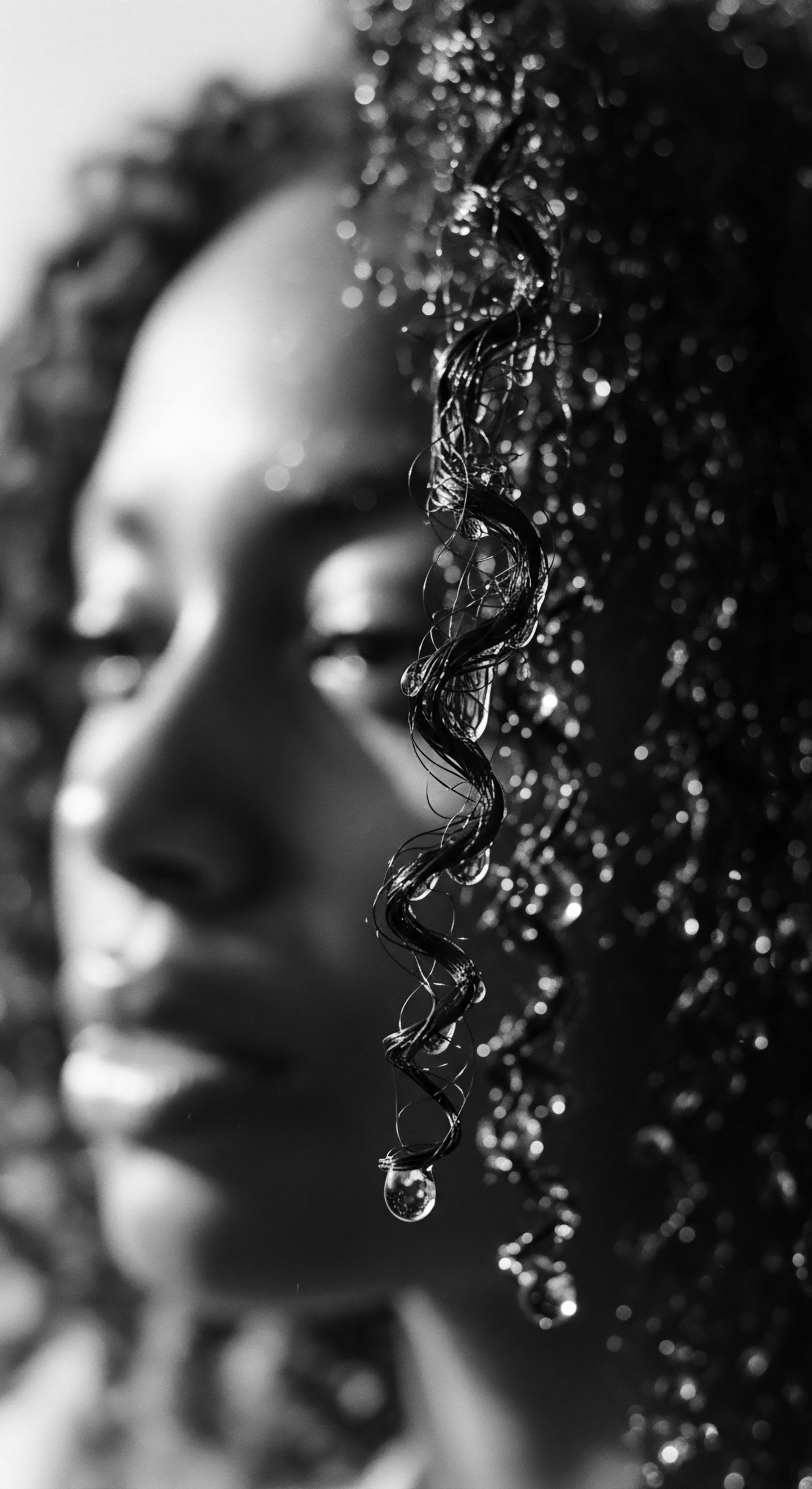
The Melanin Architects ❉ Nature’s Own Palette
At the very source of our hair’s color lies the miraculous work of melanocytes. These tiny cellular architects receive instructions from our genetic blueprint, meticulously crafting and distributing melanin granules into the keratinocytes – the cells that make up the hair shaft. As these keratinocytes harden and move upward, they carry with them the encapsulated color, creating the visible hue of each strand.
The density and type of melanin deposits influence how light interacts with the hair, determining whether it appears lustrous black, warm auburn, or vibrant brown. This biological ballet, a testament to the sophistication of the human body, provides the canvas upon which countless cultural stories are drawn.

Echoes of Ancient Practices ❉ Earth’s First Dyes
Long before synthetic laboratories, human beings drew upon the wisdom of the earth to adorn and alter their appearance. This practice, particularly in African societies, highlights an ancient appreciation for hair as a living, communicative entity. Ancestral communities, particularly in regions across Africa, observed the world around them for sources of color. They did not just use these for textiles; they recognized the potent staining capabilities of specific plants and minerals for skin and hair.
Henna, derived from the leaves of the Lawsonia inermis plant, stands as a prime example, its use as a hair dye dating back thousands of years in cultures spanning Africa, Western Asia, and Southern Asia. This botanical offering provided a reddish-brown hue, often employed not just for aesthetic appeal but for its conditioning properties and symbolic meanings.
Beyond henna, other natural elements were thoughtfully applied. In some West African communities, for instance, indigo, sourced from the Indigofera tinctoria plant, was combined with henna to achieve deeper, darker tones, even a rich black. This traditional knowledge, passed through oral traditions and hands-on teaching, speaks to a sophisticated understanding of botanical chemistry and its application for both cosmetic and spiritual purposes. These practices illustrate an early, intuitive engagement with Pigment History, where the human desire to express, protect, and signify through hair color found expression in nature’s own bounty.
- Henna (Lawsonia inermis) ❉ Yields reddish-brown, historically used for adornment and hair conditioning.
- Indigo (Indigofera tinctoria) ❉ When combined with henna, it produces darker shades, including black.
- Amla (Indian Gooseberry) ❉ Utilized for enhancing natural hair color and preventing premature graying.
- Walnut Hulls (Juglans regia) ❉ Known to impart darker, brownish tones to hair.
- Chamomile (Matricaria chamomilla) ❉ Applied for subtle lightening or golden highlights, particularly for lighter hair shades.
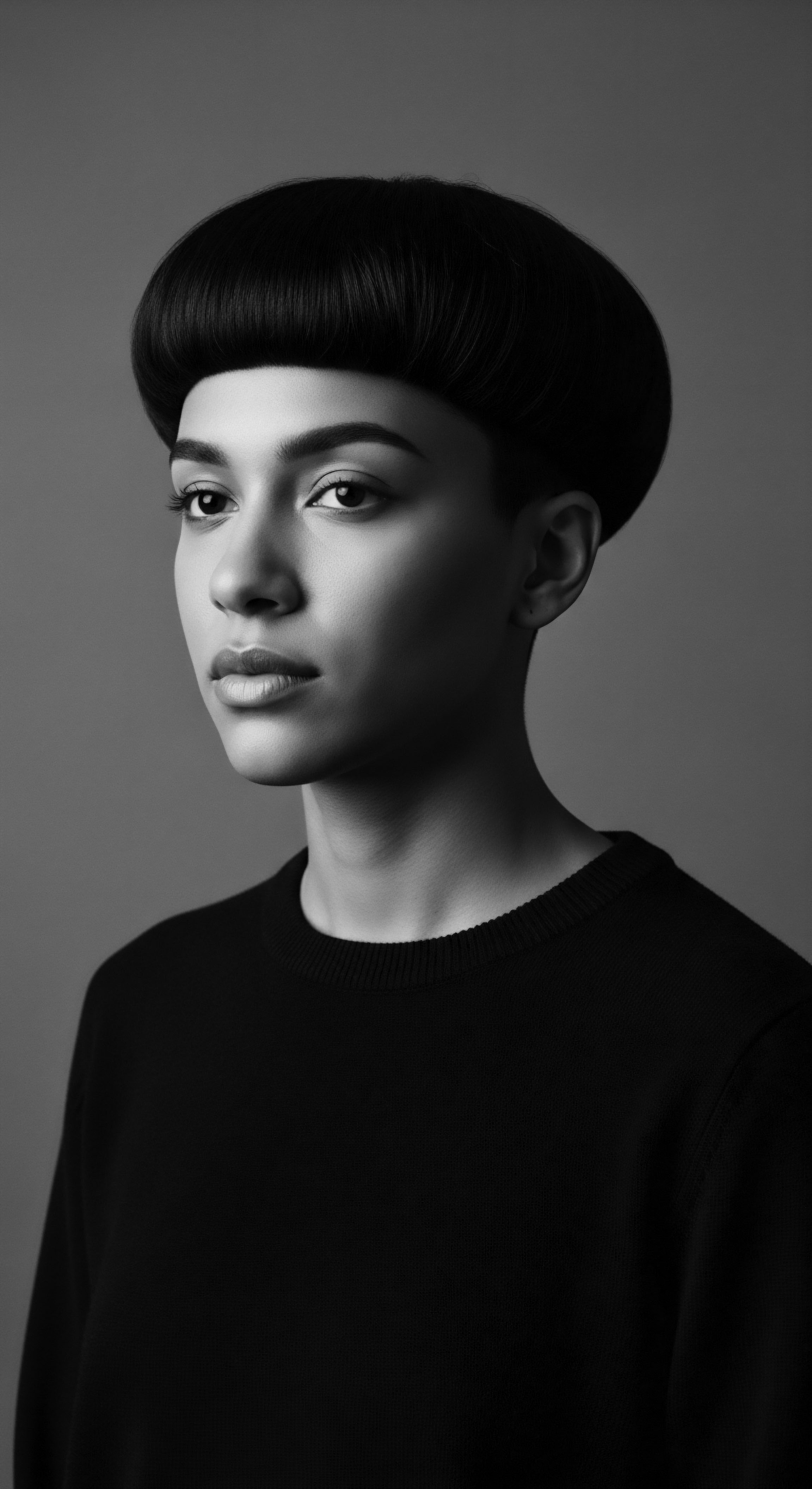
Intermediate
Moving beyond the fundamental biological definition, the intermediate understanding of Pigment History unfolds as a story of cultural expression and communal meaning. It encompasses how the inherent range of hair colors, and indeed the purposeful manipulation of those colors, has been deeply woven into the fabric of human societies. For textured hair communities, especially those of African and mixed-race descent, this history is particularly rich, often reflecting resilience, resistance, and the profound significance of identity. Hair color, intrinsically tied to the melanin within each strand, serves not merely as a superficial characteristic but as a visual dialect, conveying layers of social, spiritual, and personal meaning.

The Spectrum of Ancestry ❉ Hair Color as a Cultural Marker
The diverse array of hair colors observed in populations globally is a testament to the evolutionary journey of humanity and the genetic variations within us. In many traditional African societies, prior to the widespread disruptions of colonialism and the transatlantic slave trade, hair served as a central marker of identity. While specific hairstyles often communicated status, age, marital state, or tribal affiliation, the underlying natural hair color also played a subtle, yet significant, role.
Indigenous understanding recognized that hair, beyond its appearance, held spiritual power, a conduit between the earthly and the divine. The nuanced variations in hair color within a community could contribute to the visual representation of lineage and familial connections.
Consider, for instance, the subtle shifts in hair color that can occur across different regions of Africa due to varying genetic predispositions and environmental adaptations. These natural color spectrums were not subject to a hierarchy of ‘good’ or ‘bad’ hair; rather, they contributed to the collective beauty and diversity of the group. The appreciation for the hair’s natural state, including its pigment, was often deeply intertwined with practices of holistic well-being and a profound respect for the inherited self.
Hair color, beyond its biological makeup, has long served as a profound cultural identifier, reflecting lineage, social standing, and spiritual connections within textured hair traditions.

Rituals of Adornment and Protection ❉ The Tender Thread
Ancestral practices surrounding hair care were, and remain, deeply holistic. They often involved not only cleansing and styling but also intentional application of natural substances that influenced hair color, either by enhancing its natural hue or by providing a temporary alteration. These applications were rarely purely cosmetic. They often served dual purposes of beautification and protection, guarding the hair and scalp from environmental elements, particularly the sun, which can naturally alter melanin.
For example, the Himba people of Namibia are renowned for their traditional mixture of Otjize, a paste of ochre pigment, butterfat, and aromatic resins. This rich, reddish-brown application, meticulously worked into the hair and skin, serves as a natural sunscreen, insect repellent, and cleanser. Its deep red hue, a result of the ochre, becomes an integral part of their distinctive appearance, directly influencing the perceived color of the hair and signifying cultural identity and status within the community. The Pigment History here is not merely about inherent color, but about the conscious, culturally informed choices made to interact with and enhance that color through ancestral wisdom.
Such rituals represent a tender thread connecting generations. They embody a knowledge system that understands the interplay of natural elements, personal well-being, and communal belonging. The coloring agents, often derived from botanicals or minerals, were seen as extensions of the earth’s healing and beautifying properties, applied with intention and care. This approach starkly contrasts with later, externally imposed beauty standards that often devalued natural hair colors and textures, urging assimilation.
| Traditional Pigment Source Henna (Lawsonia inermis) |
| Primary Cultural Application Hair dye, body art (e.g. weddings, celebrations) |
| Underlying Purpose (beyond Color) Conditioning, cooling properties, symbolic significance |
| Traditional Pigment Source Indigo (Indigofera tinctoria) |
| Primary Cultural Application Deepening hair color, creating darker tones |
| Underlying Purpose (beyond Color) Often combined with henna for therapeutic benefits, hair strength |
| Traditional Pigment Source Ochre & Butterfat (e.g. Himba Otjize) |
| Primary Cultural Application Hair and skin cosmetic, distinctive reddish hue |
| Underlying Purpose (beyond Color) Sun protection, insect repellent, cultural identity marker |
| Traditional Pigment Source Amla (Phyllanthus emblica) |
| Primary Cultural Application Natural hair darkening, promoting hair health |
| Underlying Purpose (beyond Color) Preventing premature graying, nourishing scalp, Vitamin C source |
| Traditional Pigment Source Black Tea/Coffee |
| Primary Cultural Application Enhancing darker hair shades, temporary tinting |
| Underlying Purpose (beyond Color) Adds shine, mild astringent for scalp health. |
| Traditional Pigment Source These ancestral practices highlight a holistic approach to hair color, where aesthetic enhancement was often intertwined with protection, health, and deep cultural meaning. |

Academic
An academic definition of Pigment History, particularly within the context of textured hair heritage, delineates a rigorous examination of melanin’s biological permutations alongside its profound socio-cultural and historical manifestations. This perspective posits Pigment History as the scholarly inquiry into the complex interplay between genetic predispositions for hair color, the evolution of human perception regarding these hues, and the resultant cultural practices, identity constructions, and systemic challenges that have defined experiences of Black and mixed-race individuals globally. It is an intellectual landscape spanning biology, anthropology, sociology, and critical race theory, investigating how the inherent chromatic variations of hair strands have been interpreted, valorized, marginalized, and reclaimed across historical epochs and diasporic trajectories.
The core meaning of Pigment History, from an academic standpoint, is not merely a chronicle of scientific discovery. It is an intricate exploration of how hair pigmentation has served as a tangible and symbolic locus for power dynamics, aesthetic hierarchies, and enduring cultural resistance. This perspective demands a meticulous analysis of indigenous knowledge systems concerning hair colorants and care, contrasting these with the imposed Eurocentric beauty ideals that arose during colonial periods and the transatlantic slave trade. The historical trajectory of hair color, therefore, reveals not just the biology of melanin, but the social construction of ‘beauty’ and ‘acceptability’ tied to phenotype.

Melanin’s Genetic Grandeur and Global Distribution
The genetic underpinnings of melanin production, involving genes like MC1R, TYR, TYRP1, and OCA2, demonstrate the deep biological heritage of human variation. While these genes primarily determine skin and eye color, their influence extends to hair pigmentation, exhibiting remarkable diversity, especially within populations of African descent. The evolutionary significance of darkly pigmented skin and hair in high-UV environments in Africa points to a robust genetic adaptation.
Yet, as human populations migrated, diverse selective pressures and genetic drift led to a broad spectrum of pigmentation, with the highest genetic diversity for these traits persisting within Africa. A nuanced understanding acknowledges that the range of hair colors present in Black and mixed-race communities is a biological reality, a testament to ancestral journeys and genetic richness.
Research on human pigmentation evolution highlights that the ancestral human likely possessed darkly pigmented skin, and variations observed today are a result of environmental adaptations and gene variants. This biological reality challenges simplistic notions of race and color, grounding the discussion in scientific understanding. Studies, while still limited in scope for continental Africans, continue to unveil the genetic ‘palette’ of skin pigmentation gene variants, showcasing the complex patterns observed today.
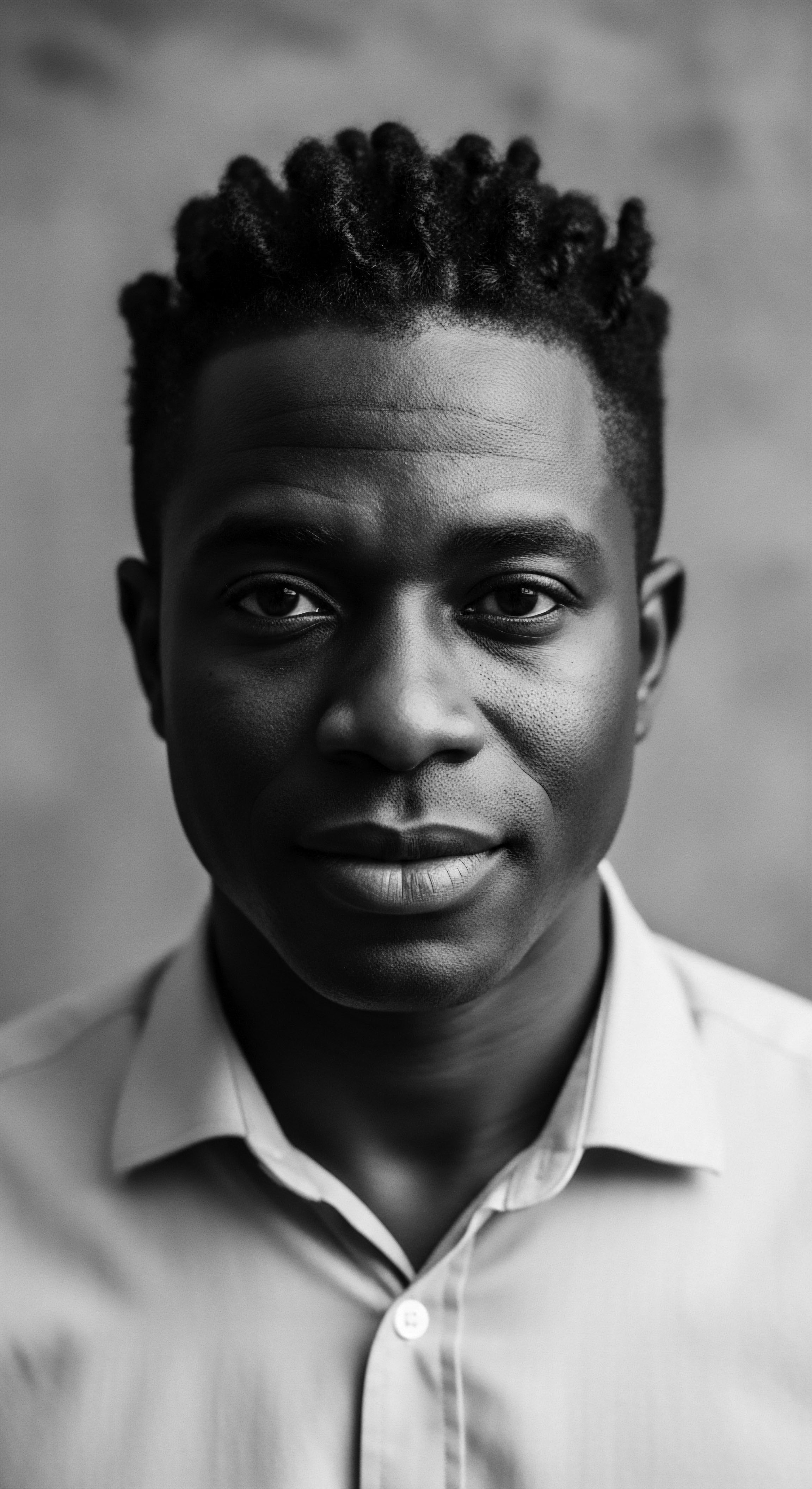
The Socio-Historical Weight of Hue ❉ A Case Study in Colorism
The historical journey of Pigment History for textured hair finds its most poignant and challenging expression in the socio-historical phenomenon of Colorism. Colorism, defined as discrimination based on skin tone, often with lighter skin tones and hair textures preferred over darker ones, has roots deeply embedded in the transatlantic slave trade and colonial systems. In these contexts, perceived closeness to European phenotypes, including straighter hair and lighter skin/hair color, often granted preferential treatment, creating an internal hierarchy within marginalized communities.
A particularly illuminating, yet distressing, historical example is seen in the context of enslaved Africans and their descendants in the Americas. As Dr. Jennifer Leath, an associate professor of Black religion and undergraduate chair of the Black Studies program, states, the hair of people of African descent became a “site for the expression of a violent and violating curiosity on the part of those who colonized, conquered, and trafficked people of African descent”. Slave traders often shaved the heads of captives, a practice aimed at stripping them of dignity and erasing their connection to African roots, where hair had signified tribal, social, and marital status.
Beyond this physical desecration, the imposition of Eurocentric beauty standards led to the internal valuing of ‘good hair’ – hair perceived as straighter and softer – over ‘bad hair’ – hair that was kinky and coarse. This internal valuing extended to hair color, where lighter shades or the ability to achieve them through chemical processing became associated with greater social and economic access.
A significant statistic revealing the enduring impact of this historical legacy comes from a 2019 study conducted by Dove among Black and White American girls. This research indicated that 66 Percent of Black Girls in Majority-White Schools Experienced Hair Discrimination, Compared to 45 Percent of Black Girls in Other School Environments. Furthermore, 80 percent of Black women reported being more likely than White women to agree with the statement, “I have to change my hair from its natural state to fit in at the office”. While this statistic speaks broadly to hair discrimination, it fundamentally connects to the historical valuation of hair textures and colors that align with dominant, often Eurocentric, beauty ideals.
This demonstrates how the perception of hair’s intrinsic pigment and texture, historically shaped by oppressive systems, continues to manifest in contemporary experiences, influencing self-perception and access to opportunities. The societal pressure to alter one’s hair from its natural state, often involving chemical processes that permanently change its color or texture, stands as a direct consequence of this historical and ongoing colorism, a critical aspect of Pigment History.
The enduring impact of colorism, rooted in colonial ideologies, has profoundly shaped the historical and contemporary experiences of hair discrimination within Black and mixed-race communities.
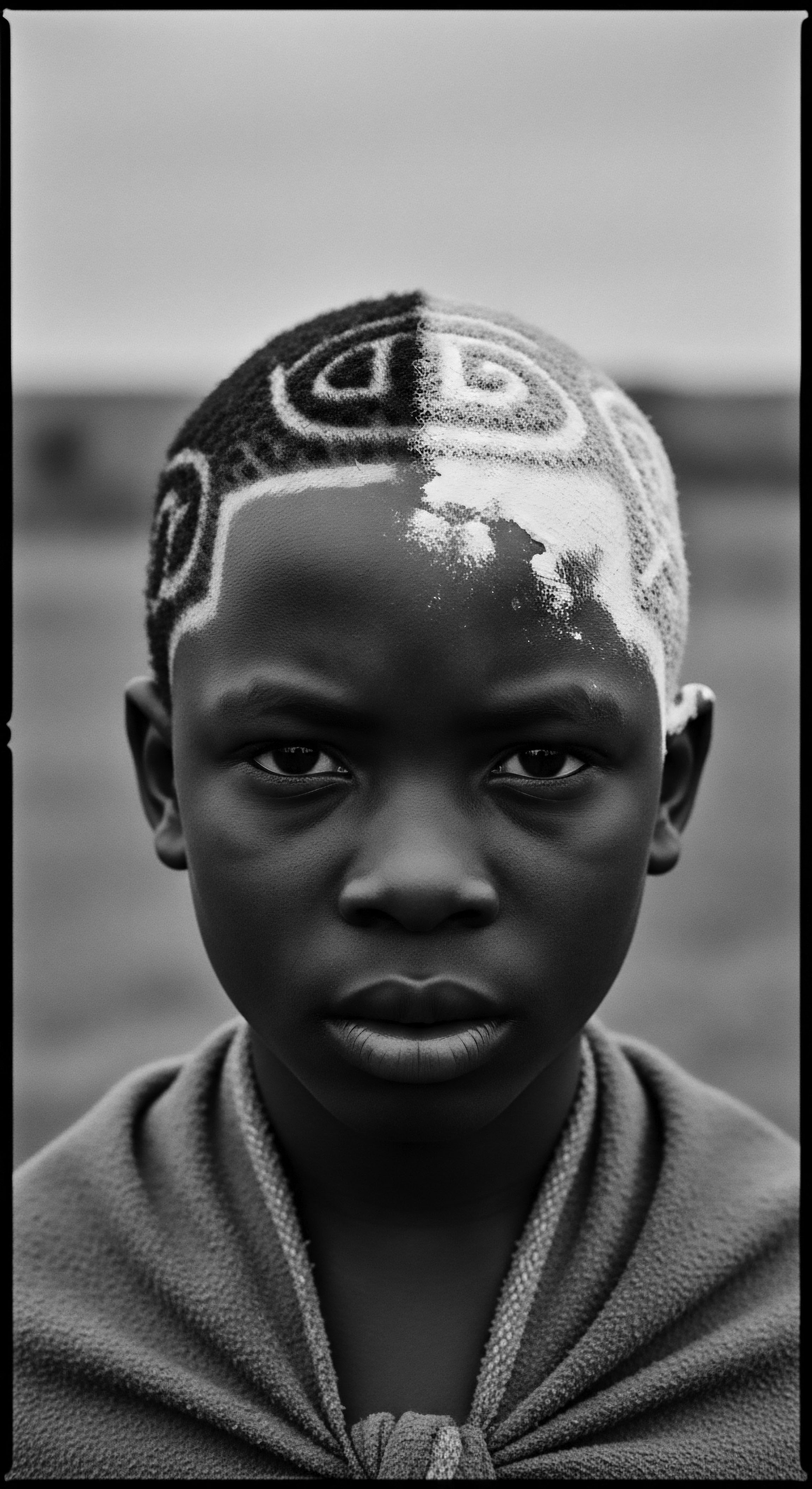
Reclaiming the Color Story ❉ The Unbound Helix
Despite centuries of external pressure, textured hair communities have continuously asserted their autonomy and celebrated the intrinsic beauty of their hair, including its natural spectrum of colors. The Civil Rights Movement in North America marked a powerful resurgence of natural, textured hair as a symbol of resistance against the erasure of Black culture. This period saw the afro become a potent symbol of collective identity and counter-hegemonic movement, celebrating the natural volume and color that chemical straighteners had long suppressed.
The reclamation of hair color within this larger natural hair movement reflects a profound act of self-acceptance and cultural affirmation. It is an assertion that the inherent melanin, the black, brown, and sometimes subtly red hues of textured hair, are beautiful, worthy of celebration, and intrinsically tied to ancestral pride. This movement is not simply about aesthetics; it is a declaration of personal and collective liberation, emphasizing health, holistic well-being, and a deep connection to lineage. Modern hair wellness advocates often bridge the scientific understanding of melanin with ancestral practices, recognizing that nourishing hair in its natural state, pigment and all, honors a continuous line of wisdom.
Consider the shift in product development and conversations around hair care. Traditional herbs like Amla, Reetha, and Shikakai, long used in ancestral practices for hair health and color enhancement, are seeing renewed interest. These ingredients, which support hair growth and provide natural alternatives to synthetic colorants, embody a continuity of knowledge. The movement is towards understanding that the best care for textured hair involves respecting its biological structure, including its melanin, and drawing wisdom from practices that have sustained healthy hair for generations.
The ongoing advocacy for legislation such as the CROWN Act in the United States, which prohibits discrimination based on hair texture and protective hairstyles, underscores the continued fight for the acceptance of natural hair in all its variations, including its color. This legal and social push reflects the deep-seated understanding that hair, with its inherent pigment and texture, remains a powerful emblem of identity and heritage.
- Pre-Colonial African Societies ❉ Hair color and style conveyed intricate social messages, including tribal affiliation, age, and marital status, with inherent hues seen as natural aspects of beauty and spiritual connection.
- Transatlantic Slave Trade and Colonialism ❉ European beauty standards were imposed, devaluing natural hair textures and darker hair colors, often leading to practices of chemical alteration for assimilation.
- Civil Rights and Black Power Movements (Mid-20th Century) ❉ A powerful return to natural hair, symbolized by the afro, challenged oppressive beauty norms and celebrated the inherent beauty and color of Black hair as a statement of identity and resistance.
- Contemporary Natural Hair Movement (21st Century) ❉ Continued reclamation of natural hair, emphasizing holistic care, ancestral ingredients, and advocating for legal protections against hair discrimination, reinforcing the beauty of all natural hair colors and textures.
| Historical Era Pre-Colonial Africa |
| Dominant Perception of Hair Color/Pigment Natural hair colors recognized as diverse and significant markers of identity, status, and spiritual connection. |
| Impact on Hair Practices Embracing natural hues; use of natural pigments (e.g. ochre, henna) for adornment, protection, and cultural symbolism. |
| Historical Era Slavery & Colonialism |
| Dominant Perception of Hair Color/Pigment Darker, textured hair and its natural colors devalued; lighter skin/hair preferred due to imposed Eurocentric ideals. |
| Impact on Hair Practices Pressure to chemically alter hair to appear straighter and often lighter; internal hierarchies based on hair texture/color. |
| Historical Era Civil Rights Era to Present |
| Dominant Perception of Hair Color/Pigment Reclamation and celebration of natural hair textures and their inherent colors as symbols of pride, resistance, and self-acceptance. |
| Impact on Hair Practices Movement towards natural hair care; revival of ancestral practices and plant-based colorants; advocacy against hair discrimination. |
| Historical Era The journey of hair color perception within Black and mixed-race communities reflects a profound arc from ancestral reverence to imposed subjugation, culminating in a powerful reclamation of inherent beauty and identity. |

Reflection on the Heritage of Pigment History
As we close this contemplation on Pigment History, we find ourselves standing at a crossroads where ancestral echoes meet the rhythms of modern life. The story of hair’s color, from the intricate dance of eumelanin and pheomelanin within each strand to the layered cultural meanings ascribed to every shade, is a testament to the enduring spirit of textured hair heritage. It is a profound meditation on how something as seemingly simple as a hue can carry centuries of narrative, struggle, triumph, and deep, abiding love. The hair on our heads is not merely a biological attribute; it is a living archive, a continuous scroll upon which our collective story is inscribed.
The journey through Pigment History, particularly for Black and mixed-race hair experiences, teaches us that understanding our hair’s color goes beyond superficial aesthetics. It invites us to honor the wisdom of those who came before us, who nurtured their strands with earth’s bounties, who understood hair as a source of communication and connection. It compels us to recognize the ways in which external forces have sought to diminish the beauty of our natural spectrum, and how, in defiance, communities have continually reclaimed the splendor of every coil and kink, every rich brown and deep black.
In every shade, every variation, there is a vibrant legacy. Our hair, in its natural pigment, whispers stories of sun-drenched lands, of resilience forged in trials, and of the unwavering determination to define beauty on our own terms. This understanding invites us to approach our hair not with a desire to conform, but with reverence, recognizing that the inherent colors of our strands are a sacred aspect of our being, a direct link to the ancestral wisdom that breathes through us. This continuous unfolding of Pigment History reminds us that to care for our hair is to tend to a part of our soul, connecting us to a heritage as vibrant and diverse as the colors of our strands themselves.
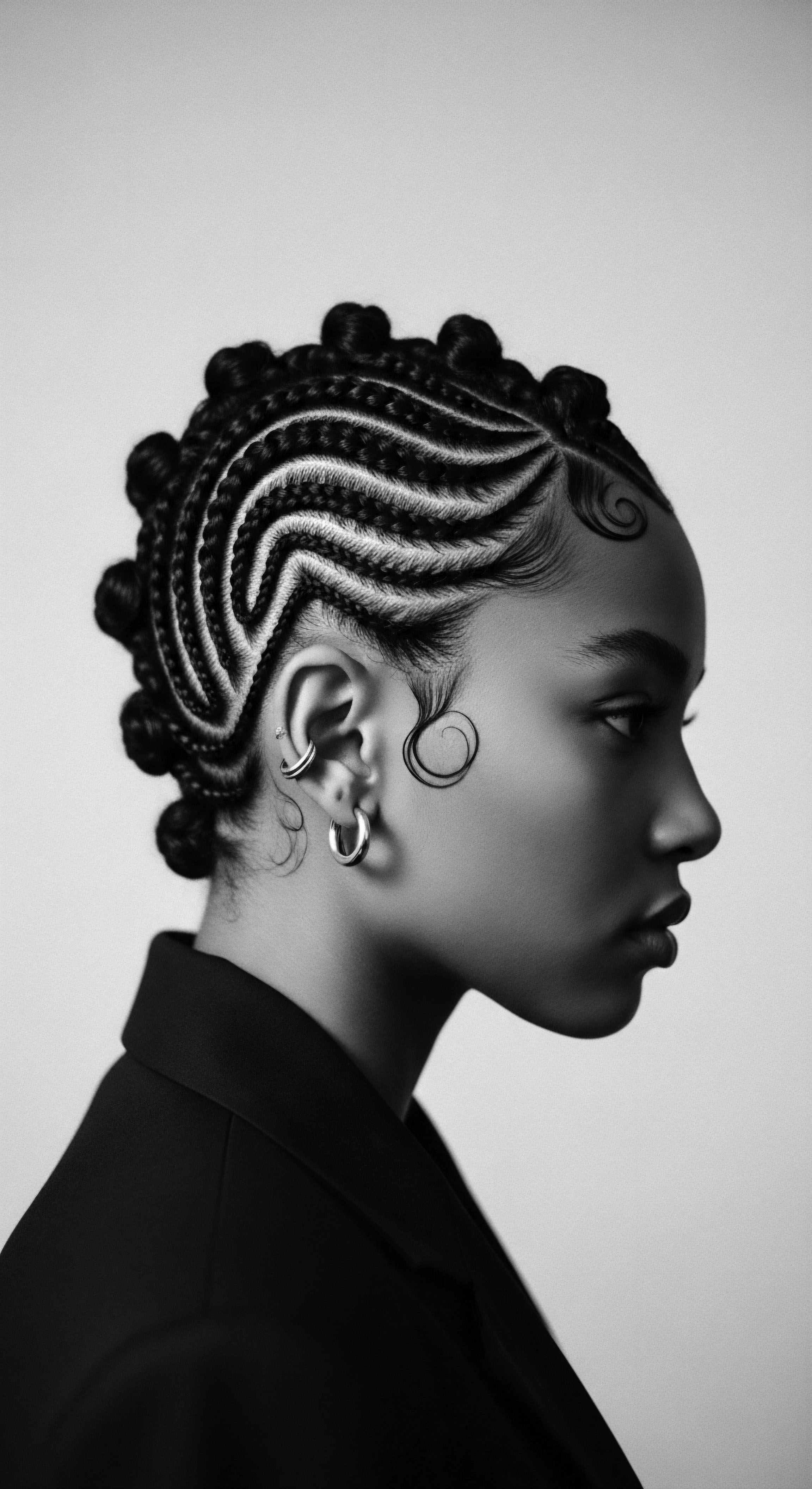
References
- Byrd, A. D. & Tharps, L. D. (2014). Hair Story ❉ Untangling the Roots of Black Hair in America. St. Martin’s Griffin.
- Chaplin, G. (2004). The Evolution of Human Skin Pigmentation. American Journal of Physical Anthropology, 125(S39), 115-132.
- Hunter, M. (2007). Colorblind ❉ The Rise of Post-Racial Racism. W. W. Norton & Company.
- Jablonski, N. G. & Chaplin, G. (2014). The Evolution of Human Skin Color. Philosophical Transactions of the Royal Society B ❉ Biological Sciences, 369(1642), 20130095.
- Johnson, D. & Bankhead, T. (2014). Hair It Is ❉ Examining the Complexities of Black Women’s Hair. Journal of Black Studies, 45(4), 312-328.
- MacFoy, C. (2004). Ethnobotany and Sustainable Utilization of Natural Dye Plants in Sierra Leone. Plant Ecology and Evolution, 137(1), 74-80.
- Mbilishaka, A. et al. (2020). Afrocentricity, Hair, and Identity ❉ A Psychological Exploration of the Natural Hair Movement. Journal of Black Psychology, 46(2), 154-173.
- Shahin, C. (2021). Herbal Hair Coloring ❉ A Step-by-Step Guide to Using Natural Plant Dyes for Healthy Hair. Hachette Book Group.
- Thompson, A. (2019). Hair in African Civilizations ❉ A Historical and Cultural Exploration. University of California Press.
- Wilder, J. K. & Cain, C. L. (2011). Colorism ❉ Global Implications and Challenges. Journal of Health Care for the Poor and Underserved, 22(3), 1017-1033.
